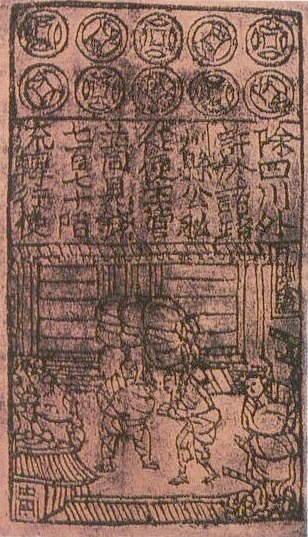Fast forward about 300 years, and Jiaozi became the first official paper currency in the Sichuan capital of Chengdu. These notes were stamped with official seals to ensure that no one made false copies. Even in the tenth century, counterfeiting was a concern.
So, what are we going to do with all that worthless paper when we finally become a cashless society? Dollar bills are quite useful when it comes to bar tricks, and you can use one to crack open a cold one or even roll a cigarette. If you want to do something more artsy, there's always monigami.
Origami has been around since the 17th century, but the art of folding money, or monigami for those who are in the in, is relatively new. You can fold money into hundreds of shapes, like a tiny box or shirt and tie, but flowers are some of the most popular projects, especially when Mother's Day comes around.
What mom wouldn't like a flower made of cold hard cash?
So, here are ten different types of flowers you can origami out of a few bucks, for Mother's Day or pretty much any other day of the year.
The Plumeria Flower
In Asian folklore, the plumeria is believed to house ghosts and demons, and in Malaysia it's associated with vampires. It also happens to be one of the simplest flowers to fold since it only requires one bill.The Lotus Flower
The lotus flower, also known as nelumbo nucifera, is a symbol of purity in many cultures. In Asian religions, deities are often seated on the flowers in works of art. The lotus is also one of the more popular origami creations due to both its shape and cultural significance.The Kusudama Flower
The Kusudama is actually the name for a type of Japanese paper model, which is a large sphere made of individual folded flowers. It's another very popular origami project due to the fact that it looks a lot more complicated than it actually is.The Four Leaf Clover
St. Paddy's Day may have already passed this year, but the luck of the Irish is always around and it's all about the four-leaf clover.The Three Dollar Flower
In this project, each dollar makes two of the petals. Obviously, you'll need three bills for this one.The Rose
The rose is the queen of all flowers, and is almost synonymous with romance and love. What better way to show you care than with a bouquet of roses made out of money?The 6 and 8 Petal Flower Variations
If you've got a lot of time to kill, this one's for you. This video shows how to make a popular flower design by paper crafter Stephen Hecht. It's over an hour long and is excruciatingly detailed, but only uses a single dollar bill.Money Lei
Who doesn't want to get lei'd? This Hawiian money lei would make for an awesome graduation gift or some enviable island attire.The Modular Flower
If you prefer a more geometric design, this modular flower is perfect. You can either use three or four bills, depending on how many petals you want.The Money Boquet
"The more the merrier." The old saying goes for pretty much anything in life, so why not origami money flowers?Since Mother's Day is coming up, any combination of these flowers would make a great gift to remind Mom that she's got a kid who's thoughtful and creative. Besides, they'll last a lot longer than a real bouquet (at least, until your Mom is strapped for cash).
 home
home










 Home
Home
Post a Comment